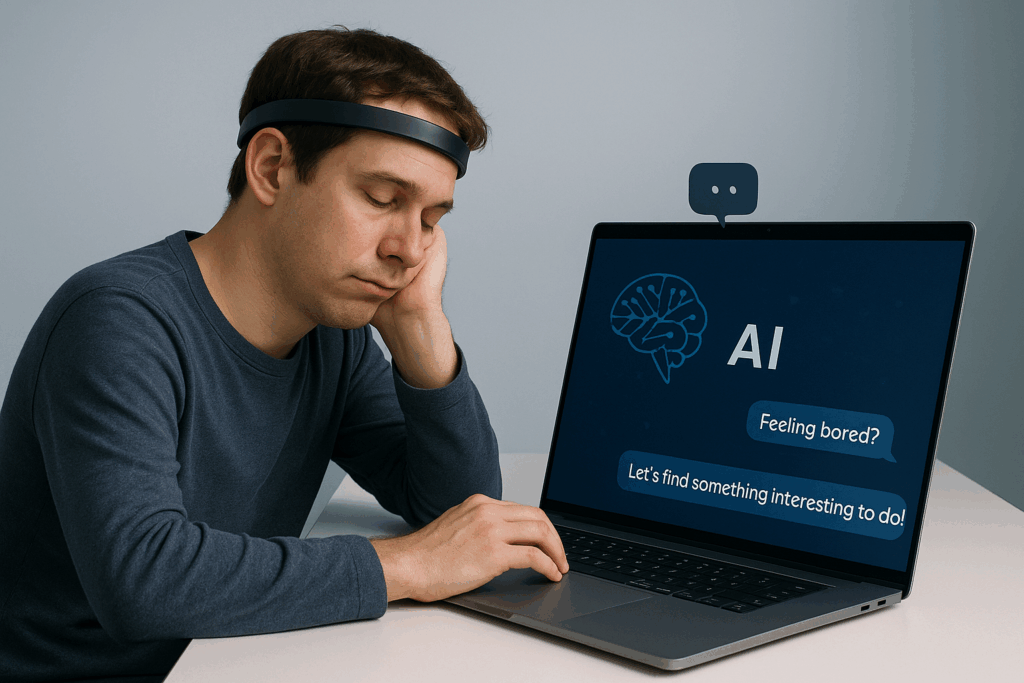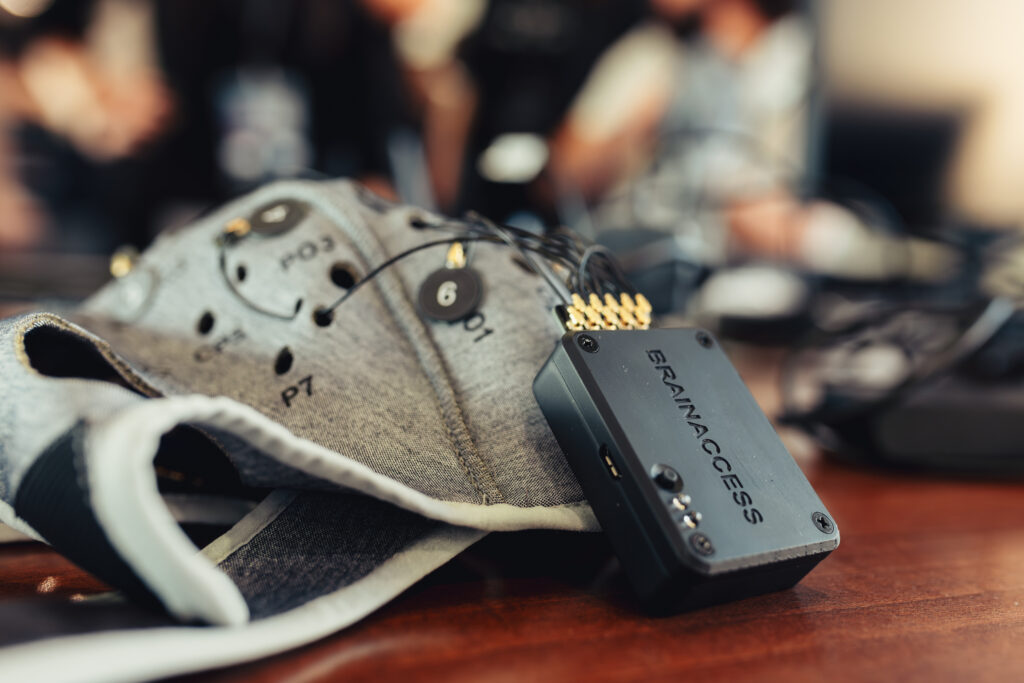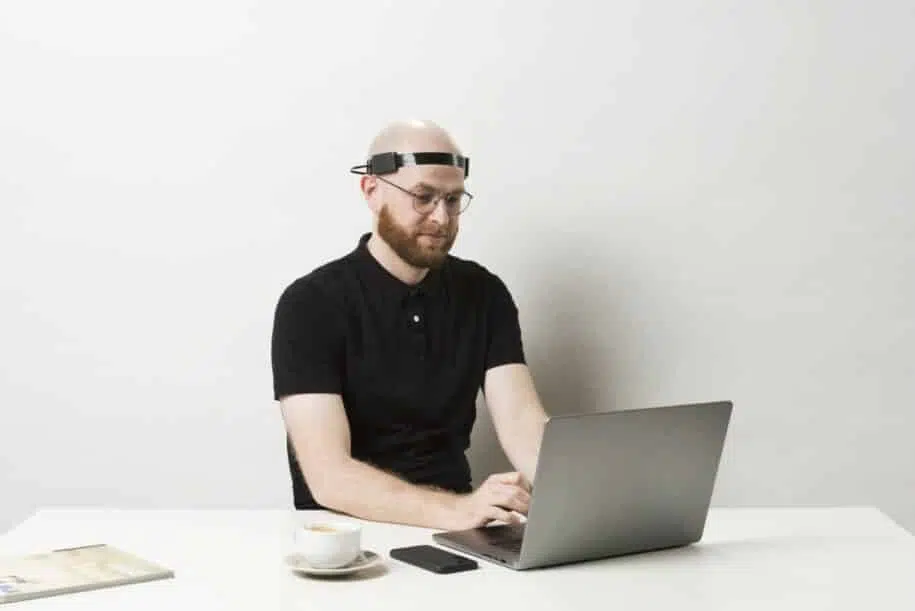The convergence of neuroadaptive technology, brain-computer interfaces (BCIs), and artificial intelligence is reshaping the boundaries between mind and machine. Traditionally, BCIs have enabled basic communication and control by translating brain activity, often measured through EEG (electroencephalography), into digital signals. However, the integration of advanced AI, particularly large language models (LLMs), is paving the way for a new generation of BCIs, systems that not only read brain signals but learn from and adapt to them over time.
Imagine an AI assistant that automatically adjusts its tone based on your mood, sensing when you are bored, irritated, or confused, and adapting its language to better meet your needs. This neuroadaptive approach could revolutionize how we design content, educational material, and interactive experiences. Alternatively, think about a system that can monitor your cognitive health in real time and provide feedbacks to improve your wellbeing, help you focus on your tasks, and be more productive.
At the core of this emerging paradigm is the idea of creating intelligent devices that continuously monitor the brain’s electrical activity and use AI to interpret complex patterns associated with cognitive, emotional, and physiological states. Unlike conventional BCIs, which often rely on predefined, task-specific decoding strategies, neuroadaptive systems augmented with LLMs can build flexible, individualized models of brain activity. These models evolve with the user, personalizing responses based on real-time brainwave fluctuations and long-term neural trends.
Another particularly exciting frontier is the possibility of “chatting” with your brain. Imagine a system where your EEG signals—subtle shifts in frequency bands like alpha, beta, or gamma—are continuously fed into a deep learning model that interprets them not just as raw data, but as dynamic expressions of your mental and physical state. An AI agent, powered by an LLM, could act as an intermediary: translating brain-derived signals into natural language feedback, detecting early signs of stress, cognitive decline, or mood disturbances. Such a system could offer real-time dialogues about your wellbeing, suggesting interventions, lifestyle changes, or even simply offering reassurance.

For aging populations, this could revolutionize health monitoring, providing non-invasive insights into cognitive resilience, sleep quality, or emotional health long before traditional symptoms appear. It could also help with developing and administering at-home cognitive training solutions to preserve brain health and delay the onset of pathological states (e.g., Alzheimer disease).
In mental health, a brain-adaptive AI could track neural markers of depression, anxiety, or attention fluctuations, offering a compassionate, always-available ally that communicates directly with the brain’s own rhythms.
The fusion of brain-computer interfaces with adaptive AI models transforms BCIs from simple control tools into true neuroadaptive partners: systems capable of learning, understanding, and evolving with us. While the vision for neuroadaptive AI-driven BCIs is compelling, several key challenges must be addressed to make it a reliable and widely usable reality:
- Signal Quality and Noise: EEG signals are inherently noisy and highly susceptible to artifacts from muscle activity, eye movements, and external electrical interference. Improving real-time artifact removal, developing more robust preprocessing pipelines, and possibly integrating complementary sensors (e.g., EMG, EOG) could help increase the reliability of brain signal interpretation.
- Spatial Resolution: Traditional EEG offers excellent temporal resolution but poor spatial resolution compared to techniques like fMRI. Advancements are needed in both hardware (e.g., high-density, flexible electrode arrays) and software (e.g., source localization algorithms) to better resolve the neural sources of cognitive and emotional states.
- Comfort and Wearability: Many EEG devices remain bulky or uncomfortable for long-term use. Designs must strike a balance between high signal quality and user comfort, creating lightweight, breathable, and unobtrusive systems that users can wear throughout daily activities without disruption.
- Portability and Integration: High-fidelity EEG systems are often confined to laboratory settings. Developing portable, wireless, and battery-efficient devices without significant loss of data quality is essential for real-world applications.
- Data Privacy and Security: Brain data is among the most sensitive personal information. Ensuring strong encryption, local (on-device) processing options, and clear user control over data access and use is critical to prevent misuse or breaches of neural information..
- Generalization and Personalization: Brain signals vary enormously between individuals and even within the same individual across time. AI systems must balance personalization (tailoring models to individuals) with generalization (avoiding overfitting and ensuring robustness across sessions and users).
- Training AI Models: Deep learning models, including those based on LLM architectures, require large amounts of well-labeled training data and significant computational resources. Building scalable, efficient AI pipelines that can operate with relatively small, noisy datasets—typical of real-world EEG recordings—remains a major technical hurdle.
At BrainAccess, we are actively working to tackle these challenges. Our hardware solutions deliver fully portable, lightweight EEG devices with up to 8 hours of battery life. Signals are streamed seamlessly via Bluetooth, no wires needed. Thanks to our high-quality dry electrode technology, users benefit from fast setup times, excellent signal fidelity, and outstanding comfort, even on the go. Our HALO headband offers maximum wearability, enabling continuous use throughout the day without disruption.

But we are not stopping here. We are relentlessly innovating toward even smaller, lighter devices, Wi-Fi connectivity to further enhance flexibility and performance, and new algorithms for signal cleaning and EEG power analysis. Our mission is to make brain monitoring effortless, accessible, and ready for the future.
BrainAccess is developed by Neurotechnology, a company with decades of expertise in machine learning and deep learning solutions. Building on this strong foundation, we are fully equipped to meet the challenges of combining AI with EEG, creating smarter, more adaptive neurotechnologies.
Does this topic fascinate you? Follow our page and stay tuned for more updates, insights, and breakthroughs at the intersection of neuroscience, AI, and innovation!
Written by Martina Berto, Neuroscientist and Research Engineer for BrainAccess at Neurotechnology.

